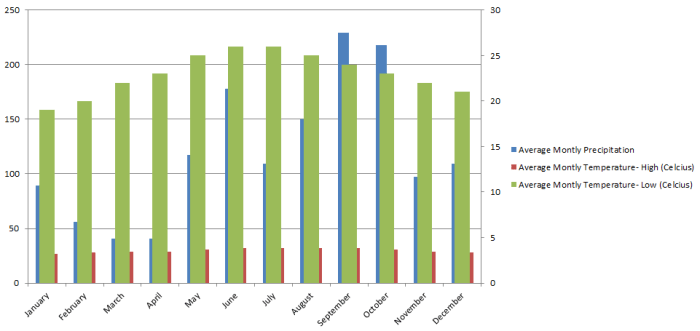Average precipitation in coral reefs plays a pivotal role in shaping these vibrant marine ecosystems. It influences coral growth, nutrient cycling, and overall biodiversity. Understanding the patterns and impacts of precipitation on coral reefs is crucial for their conservation and resilience amidst a changing climate.
Precipitation in coral reef regions is influenced by various environmental factors, including temperature, wind patterns, and altitude. Monitoring and measuring precipitation are essential for assessing its impact on coral reef health and developing informed conservation strategies.
Environmental Factors Influencing Precipitation
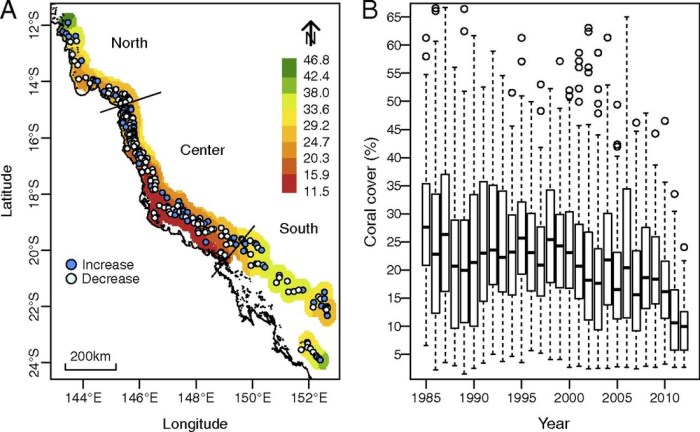
Precipitation is a fundamental component of the Earth’s water cycle, and its distribution is influenced by a multitude of environmental factors. Temperature, wind patterns, and altitude play pivotal roles in determining the amount and distribution of precipitation in different regions.
Temperature
Temperature exerts a significant influence on precipitation formation. As air temperature rises, its capacity to hold moisture increases. When warm air containing moisture encounters cooler air, it condenses and forms clouds. If the clouds become saturated with moisture, precipitation occurs.
In tropical regions, where temperatures are consistently high, the air can hold a large amount of moisture, leading to frequent and heavy rainfall. In contrast, in polar regions, where temperatures are low, the air has a limited capacity to hold moisture, resulting in less precipitation.
Wind Patterns
Wind patterns play a crucial role in the distribution of precipitation. Winds can transport moisture-laden air from one region to another, affecting the precipitation patterns in both areas.
For example, the prevailing trade winds in the tropics carry moisture from the ocean over land, leading to abundant rainfall on the windward side of mountain ranges. Conversely, the leeward side of mountains experiences a rain shadow effect, where precipitation is scarce due to the lack of moisture-carrying winds.
Altitude
Altitude has a significant impact on precipitation levels. As air rises in altitude, it expands and cools. This cooling causes the moisture in the air to condense, leading to increased precipitation at higher elevations.
In mountainous regions, the amount of precipitation increases with altitude up to a certain point, known as the condensation level. Above the condensation level, the air becomes saturated, and precipitation occurs frequently.
Measurement and Monitoring of Precipitation: Average Precipitation In Coral Reefs
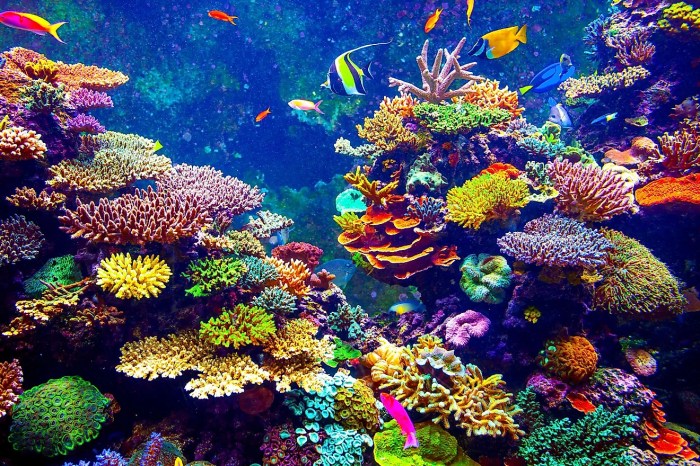
Understanding precipitation patterns is crucial for managing coral reef ecosystems. Several methods are employed to measure precipitation in coral reefs:
In-situ Measurement
- Rain gauges:These devices collect and measure the amount of rainfall directly.
- Tipping bucket rain gauges:These gauges measure rainfall by collecting it in a bucket that tips when it reaches a certain level, triggering a count.
- Disdrometers:These instruments measure the size and velocity of raindrops, providing insights into rainfall intensity and type.
Long-term monitoring data is essential for understanding precipitation patterns and their impact on coral reefs. It helps identify trends, variability, and extreme events, informing conservation efforts.
Case Studies
- Great Barrier Reef:Precipitation data has been used to assess the impact of cyclones on coral reefs, informing management strategies to mitigate damage.
- Caribbean Sea:Long-term monitoring has revealed a decline in precipitation, linked to increased coral bleaching and mortality, prompting conservation efforts to address climate change impacts.
Impact of Precipitation on Coral Reef Ecosystems
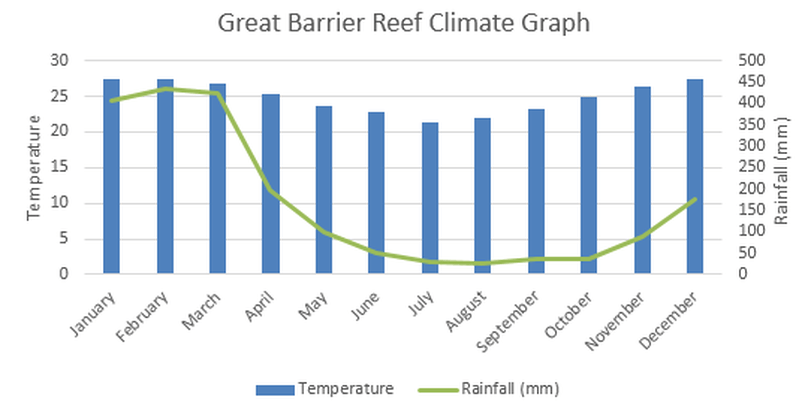
Precipitation plays a crucial role in the health and biodiversity of coral reef ecosystems. It provides essential nutrients and helps maintain the delicate balance of these underwater habitats.
Positive Effects of Precipitation on Coral Growth and Biodiversity
- Nutrient Enrichment:Precipitation brings essential nutrients, such as nitrogen and phosphorus, to coral reefs. These nutrients support the growth of corals and other marine organisms.
- Enhanced Coral Calcification:Increased precipitation can lead to higher levels of dissolved carbon dioxide in the water, which promotes coral calcification and the formation of their skeletons.
- Increased Biodiversity:Precipitation supports a wide range of marine life, including fish, invertebrates, and algae. These diverse species provide food and shelter for corals and contribute to the overall health of the reef ecosystem.
Negative Effects of Precipitation on Coral Reef Ecosystems
- Nutrient Enrichment and Algal Blooms:Excessive precipitation can lead to nutrient enrichment, resulting in algal blooms. These blooms can block sunlight, reducing coral growth and causing oxygen depletion.
- Changes in Salinity:Heavy precipitation can alter the salinity of the water, which can stress corals and make them more susceptible to disease.
- Coral Bleaching:Changes in precipitation patterns, such as prolonged droughts or excessive rainfall, can cause coral bleaching, a phenomenon where corals expel their symbiotic algae and turn white.
Examples of Precipitation Impact on Coral Reef Health
- In the Caribbean, hurricanes and heavy rainfall events have been linked to increased nutrient enrichment and algal blooms, leading to coral bleaching and reduced coral cover.
- In the Great Barrier Reef, changes in precipitation patterns have been associated with increased coral bleaching and reduced coral growth rates.
- In the Red Sea, prolonged droughts have caused coral bleaching and mass mortality events.
Anthropogenic Influences on Precipitation
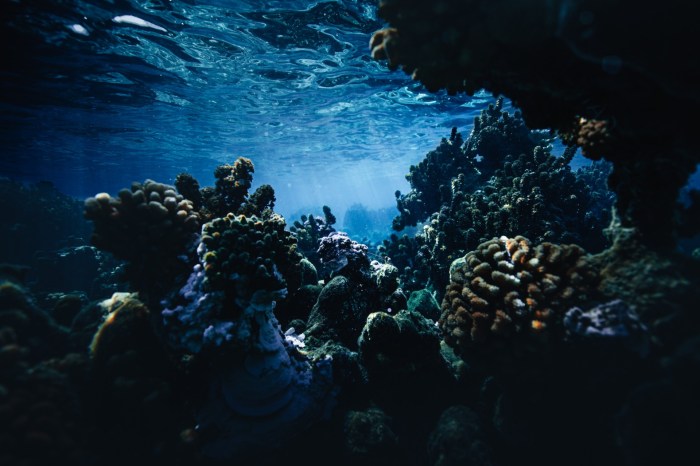
Human activities have a significant impact on precipitation patterns in coral reef regions. Climate change, deforestation, and urbanization are among the major anthropogenic factors that alter precipitation levels and affect the delicate balance of coral reef ecosystems.
Climate Change
Climate change is a pressing concern for coral reefs. The increase in greenhouse gas emissions leads to global warming, which in turn influences precipitation patterns. Changes in atmospheric circulation and ocean currents can result in altered rainfall distribution and intensity in coral reef regions.
For example, research has shown that rising sea temperatures can lead to increased evaporation, resulting in more frequent and intense rainfall events in some areas. On the other hand, other regions may experience decreased precipitation due to changes in wind patterns.
Deforestation
Deforestation, the removal of forests, has a direct impact on precipitation levels. Forests play a crucial role in the water cycle, intercepting rainfall and releasing it gradually into the soil. Deforestation reduces the amount of vegetation available to intercept rainfall, leading to increased runoff and reduced water infiltration.
In coastal areas, deforestation can disrupt the natural flow of water towards coral reefs, affecting their freshwater input and nutrient supply.
Urbanization
Urbanization, the expansion of urban areas, also contributes to altered precipitation patterns. Urban surfaces, such as buildings and roads, create a “heat island” effect, leading to increased temperatures and changes in local atmospheric conditions.
The heat island effect can influence cloud formation and precipitation, resulting in decreased rainfall in urban areas and increased rainfall in surrounding rural areas. Urbanization can also lead to increased air pollution, which can affect cloud formation and precipitation.
Future Precipitation Projections and Implications
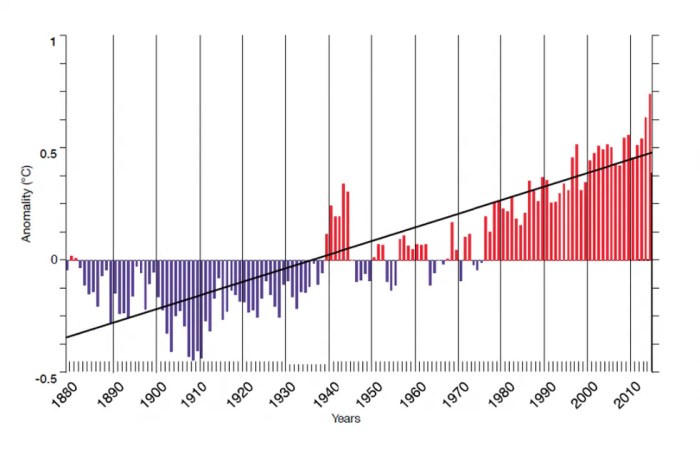
Climate change is expected to alter precipitation patterns in coral reef regions, with implications for these delicate ecosystems. Projections indicate changes in both the amount and distribution of precipitation, which could have significant consequences for coral reef health and biodiversity.
Projected Changes in Precipitation Patterns, Average precipitation in coral reefs
Table 1 summarizes projected changes in precipitation patterns in coral reef regions under different climate scenarios:
| Climate Scenario | Projected Changes in Precipitation |
|---|---|
| RCP 2.6 (low emissions) | Slight increase in precipitation during wet season, slight decrease during dry season |
| RCP 4.5 (moderate emissions) | Moderate increase in precipitation during wet season, moderate decrease during dry season |
| RCP 8.5 (high emissions) | Significant increase in precipitation during wet season, significant decrease during dry season |
Potential Implications for Coral Reef Ecosystems
- Increased flooding:Increased precipitation during the wet season could lead to flooding, which can damage coral reefs and increase sediment runoff.
- Drought stress:Decreased precipitation during the dry season could lead to drought stress, which can weaken corals and make them more susceptible to bleaching.
- Changes in coral growth and reproduction:Changes in precipitation patterns can affect coral growth and reproduction, as corals are sensitive to both water temperature and salinity.
- Shifts in species distribution:Changes in precipitation patterns could lead to shifts in the distribution of coral species, as different species have different tolerances to temperature and salinity.
Adaptation Strategies
- Reduce greenhouse gas emissions:Mitigating climate change by reducing greenhouse gas emissions is the most effective way to minimize the impacts of precipitation changes on coral reefs.
- Improve water quality:Reducing sediment and nutrient runoff can help to protect coral reefs from the impacts of flooding and drought.
- Restore degraded reefs:Restoring degraded reefs can help to increase their resilience to climate change impacts, including changes in precipitation patterns.
- Monitor and adapt:Monitoring coral reefs and adapting management strategies based on observed changes can help to minimize the impacts of precipitation changes.
General Inquiries
What are the primary factors influencing precipitation in coral reef regions?
Temperature, wind patterns, and altitude are key factors that determine precipitation levels in coral reef areas.
How is precipitation measured and monitored in coral reefs?
Rain gauges and other methods are used to measure precipitation, while long-term monitoring data helps identify patterns and trends.
What are the potential impacts of climate change on precipitation in coral reef regions?
Climate change may alter precipitation patterns, leading to changes in coral growth, nutrient availability, and ecosystem dynamics.
